In this time of coronavirus, we are really glad we have first responders who are willing to be on the front lines for us. They are the quiet everyday people who step up — and keep stepping up — when the world is falling apart.
It seems fitting that our 3D wall art honors first responders who are now out there saving the world. Every time an ambulance, fire truck or police siren goes by we think, “that is our first responders springing into action.” Our very own courageous heroes.
Being a hero isn’t about the uniform you wear but the heart to serve people. They work long hours in unpredictable circumstances. They are relentlessly committed to others. And most of their stories are unknown.
We were curious – what is the history of our first responder organizations? From where did these heroes spring? I have some unexpected time on my hands so I did some digging on the internet.
The long and interesting history of firefighting
Firefighting has a pretty long history – all the way back to Roman times if you can believe that? In a day in age when most buildings were pretty combustible and candles were the major source of light firefighting was needed, but not very robust. Water bucket brigades were the best the times could offer.
The Great Fire of London, in 1666, really set in motion the foundations of modern firefighting proving that good things can come out of disaster. That fire consumed two square miles of the city and left tens of thousands homeless.
The first organized firefighting was mostly under the power of private insurance companies that gave building owners who paid for their insurance a fire mark to put on their building. Company firefighters would only fight fires at buildings who had paid for their service. Not very compassionate but that’s history for you.
The first fire engines appeared in the 1670s and 80s. A Dutch inventor improved the existing technology and patented the very first “Sucking Worm Engine” in England. Not a really a great namer of things, clearly, but he did have a knack for invention. It was a hand-pumped device that needed a team of men but it was significantly better than a water bucket brigade from the nearest water source.
The United States took a different route. In the 1630s, some cities were outlawing wood chimneys and thatched roofs while hiring fire wardens to inspect and fine violators. Volunteer “rattle watches” keep an eye out for fires and spun their large wooden rattles to alert citizens to a fire.
Our friend, Benjamin Franklin, organized a volunteer fire department in Philadelphia that was often known as “Benjamin Franklin’s Bucket Brigade”. Members agreed to furnish their own buckets and they eventually bought a hand pump engine from England – pretty advanced tech for the day. A fire bell and hose eventually were added to their inventory.
It wasn’t until 1853 that the first professional firefighting department, 100% paid, was established in Cincinnati, Ohio.
One of the best stories we unearthed on the internet was the story of Molly Williams who was the first known black female firefighter. She was particularly amazing during the blizzard of 1818. Men in the firehouse were scarce due to an influenza outbreak. When she saw an extra hand was needed, Molly jumped in to help pull the pumper, full of water, through the deep snow to put out a fire. A true firefighting spirit.
What the show Emergency has to do with paramedics
Who remembers the iconic tv show of the 70s, Emergency? For those who don’t know this tv series, the show follows the adventures of two paramedic firefighters as they save lives and banter with each other. Pretty classic 70s tv.
It may be hard to believe but prior to 1970 ambulances were only staffed with advanced level first aid responders known as “ambulance attendants”. There wasn’t much regulation on equipment or training for ambulances staff, so it was the luck of the draw for victims if they got someone who could help them survive to the hospital.
Then a paper came out in 1966 that showed soldiers who were seriously wounded on the battlefields of Vietnam had a better survival rate than people who were seriously injured in motor vehicle accidents on California freeways. One of the things that made soldier survival possible was new rapid trauma care and specially trained medical corpsmen who could do advanced medical procedures that helped the injured survive the journey to a doctor.
The TV show, Emergency, showed up just when ambulance coverage across America was changing and the paramedic was emerging as a profession. It probably inspired quite a few people to become a paramedic. It certainly solidified the importance of training paramedics to state governments. In 1971, there were only 12 paramedic units in the whole country. By 1982, half the American population was within 10 minutes of a paramedic unit.
The short history of police
You might think that police have been protecting people since the beginning of time. However, it actually is a pretty modern idea. The year 1829 was a defining year for the organized police force, at least in London. Up to that point policing was a loosely knit together group of enforcers and thief-takers whose effectiveness was a bit spotty. But in 1829, the affectionately called “Bobbies”, established by Robert Peel, put in place unifying policing policies that worked to gain the public trust.
America had a similar problem with effective enforcement. Night-watchmen were often drunk or just found a nice place to sleep while on the job. Seeing a need for people who could serve the common good, Boston organized the first publicly funded, professional police force in 1838.
Today our police work daily to protect us, many going above the call of duty to do their jobs with courage and strength. One police deputy is the oldest police officer in the world. He became a police officer in the 1940s and today he is 97. That is serious dedication to your job.
What Makes a Hero
We know that our first responders are made up of selfless, adaptable, kind, brave and relentless men and women. They show up when it is hard and stay when it is harder.
And they rarely get the honor they deserve because they are humble.
Our 3D wall art honors their history and their special, self-sacrificing strength.
Do you have a special first responder that you want to honor with wall art? We can custom make special 3D wall art just for them.
Every piece I make is unique and can be customized to represent the person you want to honor.
It starts with a group of computer programmers that make the models. I can order something specific from them if needed. When I get the model then I can change it to exactly what you want. It can be combined with other models or I can crop sections of models. Enlarge or shrink as needed. After it is carved I go through it all by hand and clean/smooth the rough areas.
You decide what type of wood to use. Each type of wood changes the look. And if you want to add a name or message it is easy to add space for text or put text on the back. For those who have received honors, personalized wall art with their badge and insignia would be an excellent gift. We also have talented painters that can add color to your 3D wall art or you can keep its natural wood grain.
We love to create wall art. It is a lasting way to show your pride and connection to our country and honor the heroes who protect it every day.
The process to get started is easy. You can contact us by phone, email, text or Facebook messenger with all the details of your piece.
Do something for them. Give something special to your relentless hero.
Click the link to see: 3D Wall Art by Lady and the Carpenter

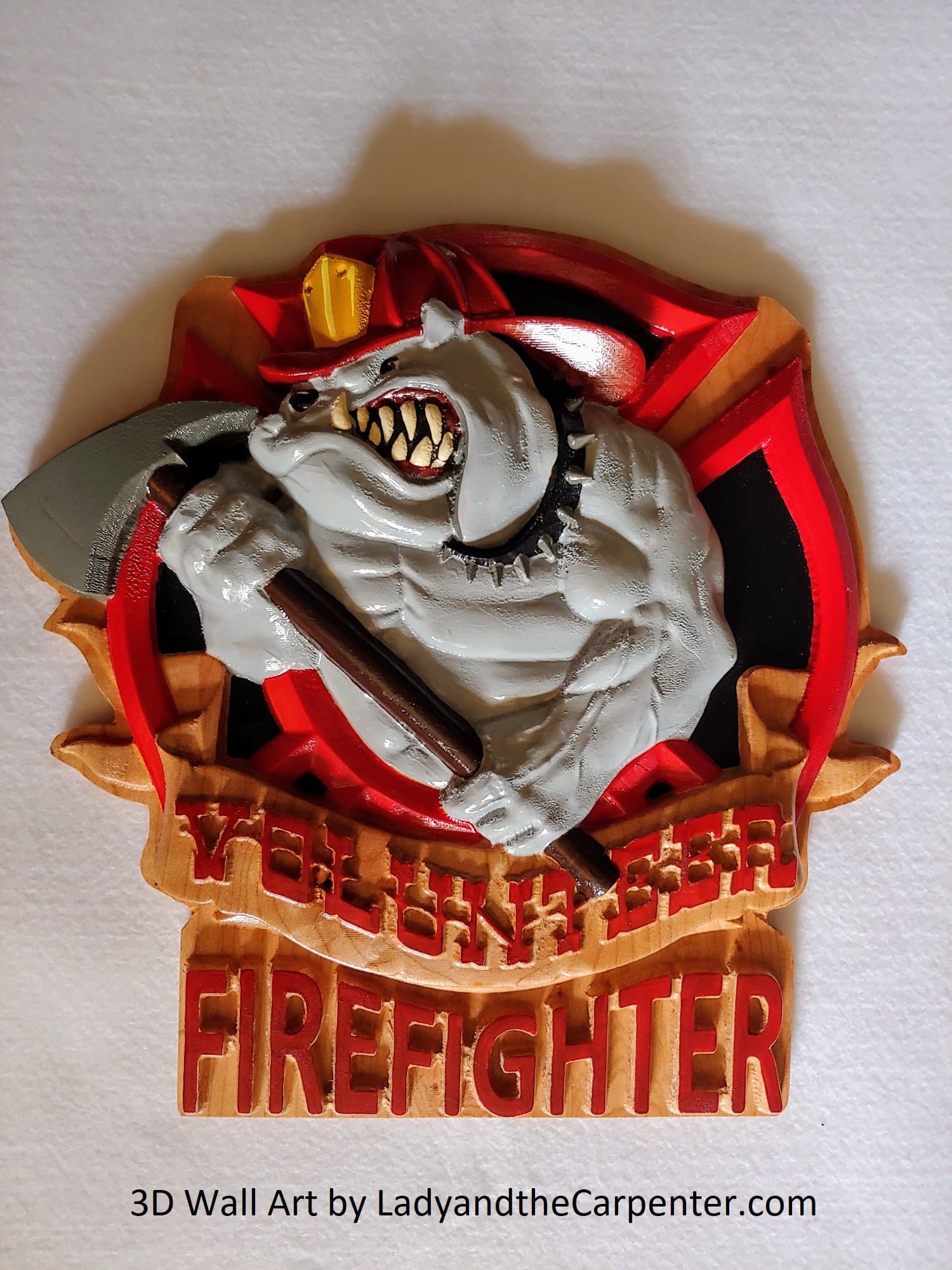
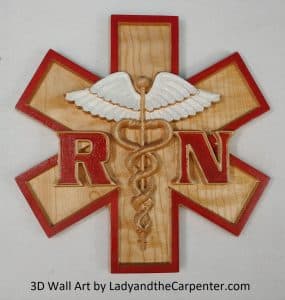
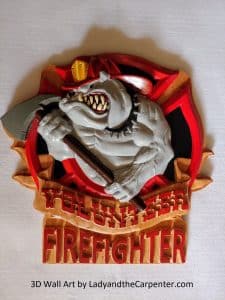
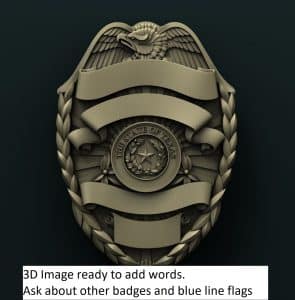
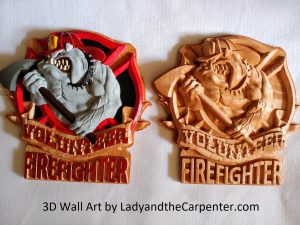
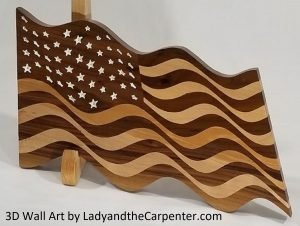
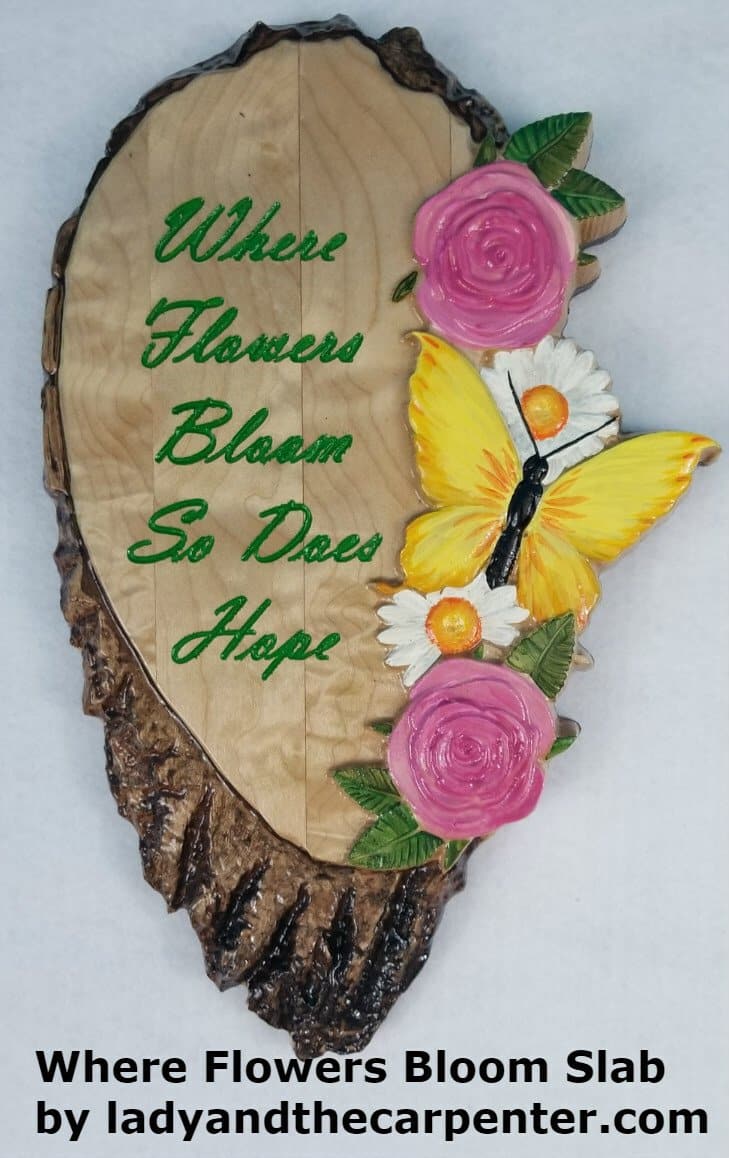
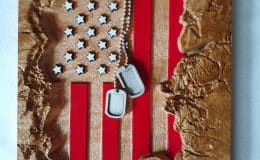
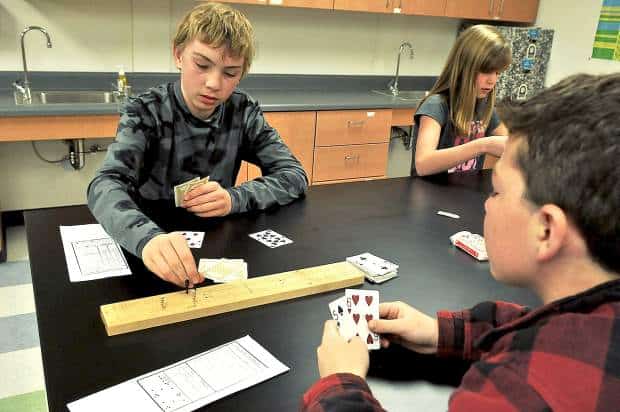
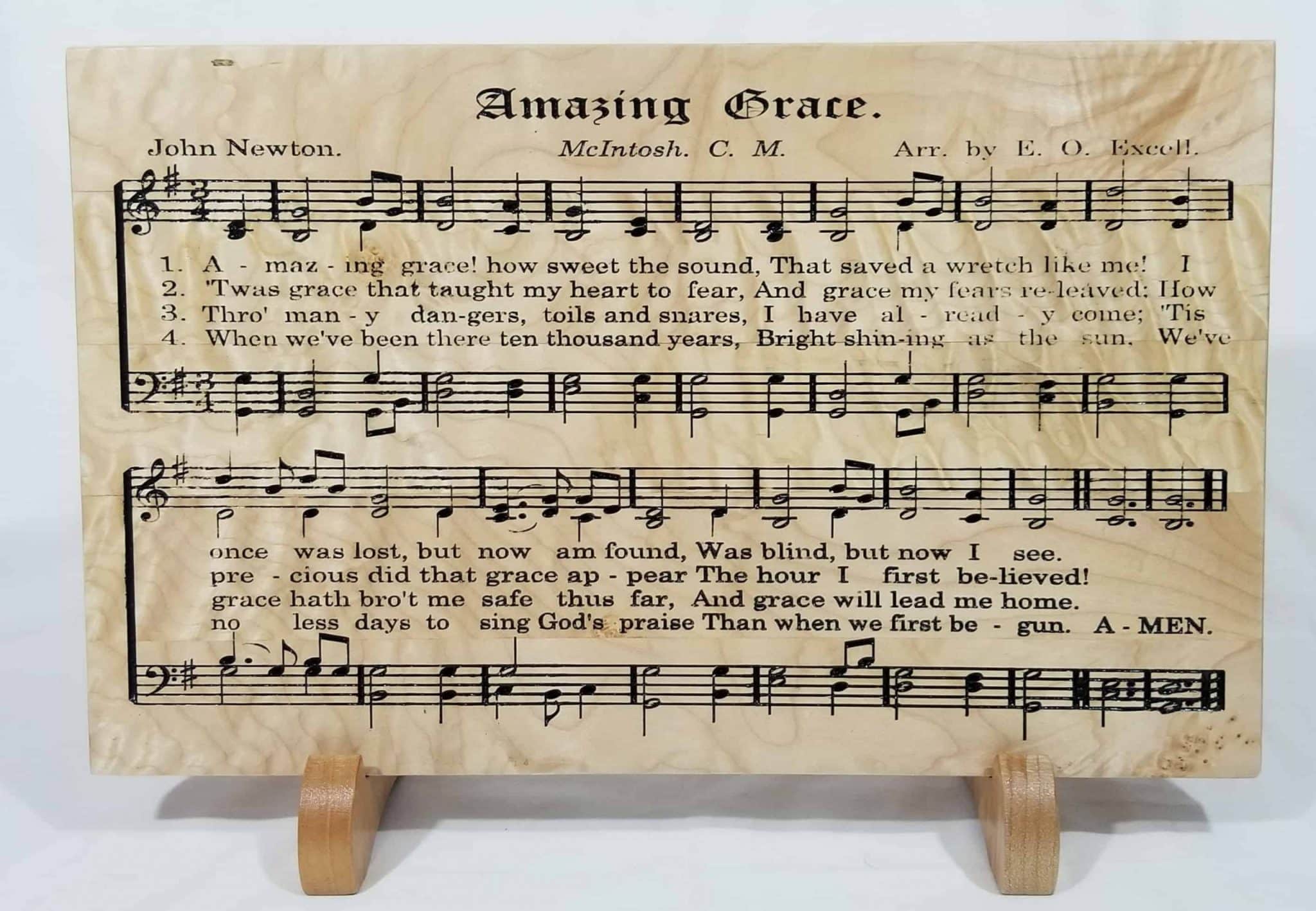
Leave a Comment